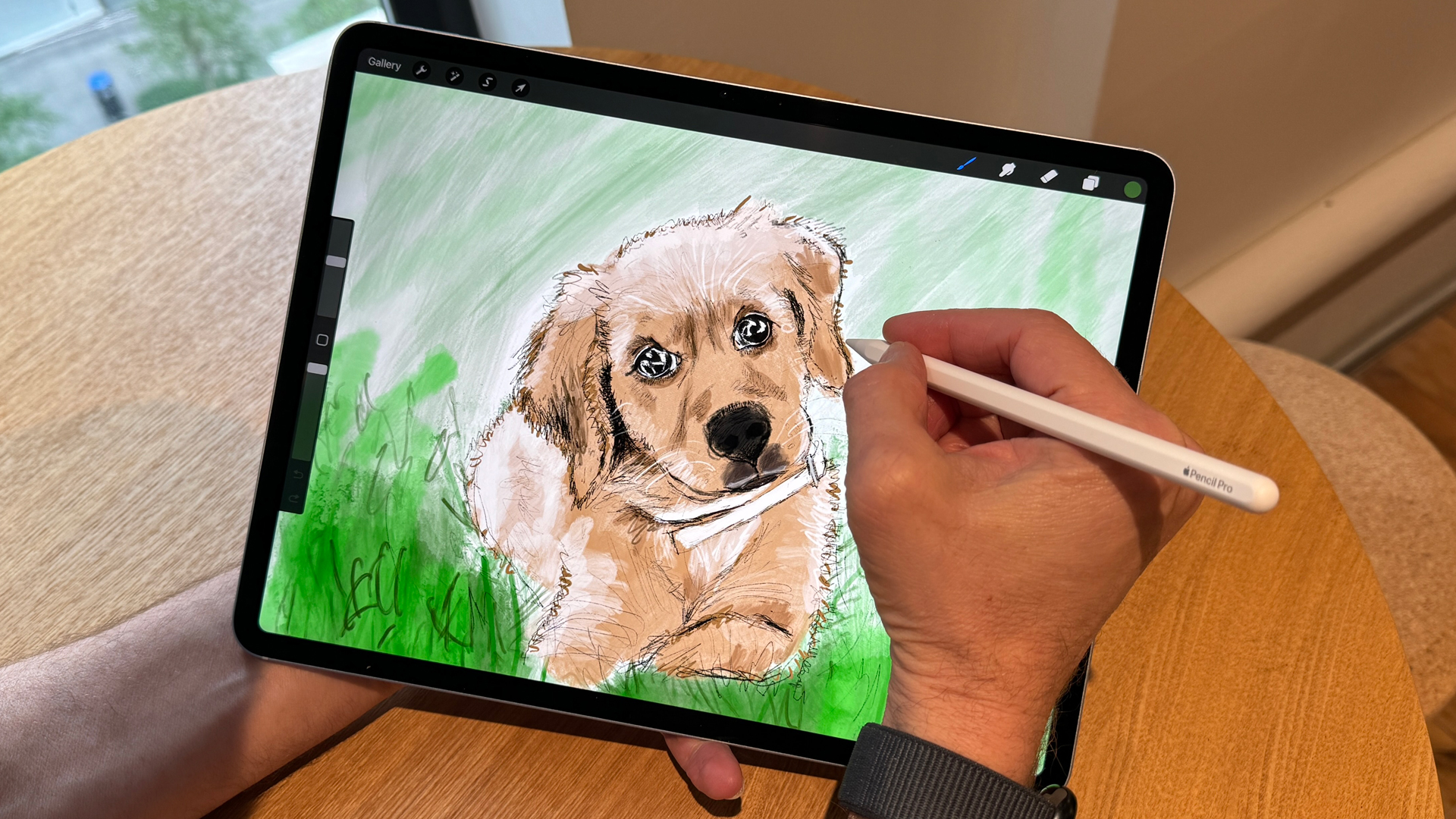
Apple iPad Air 13-inch (2024): one-minute review
Does it bother me that the new iPad Air is no longer Apple’s lightest iPad? Not really. It’s just the irony of the thing. The Air branding was always intended to signify lightness in weight and design, and even at 13 inches the new iPad Air still fulfills that promise; just don’t hold it next to the more advanced and pricier iPad Pro, which is thinner and lighter than not only this tablet but the new 11-inch Air.
What does matter here is the now vast creative and entertainment landscape that is the iPad Air 13-inch. It’s a screen size I never thought I needed, let alone would enjoy; but in a way, I’ve been lying to myself.
I used the 12.9 iPad Pro all the time. It’s kind of heavy and a bit awkward, but I can’t argue with the huge display when it comes to big drawings and big-screen mobile TV and movie viewing. In fact, I love watching content from my favorite streaming services on it. But it’s expensive, and it perhaps feels like overkill for the task at hand. The iPad Air 13-inch is the more affordable option for those with big-screen iPad dreams.
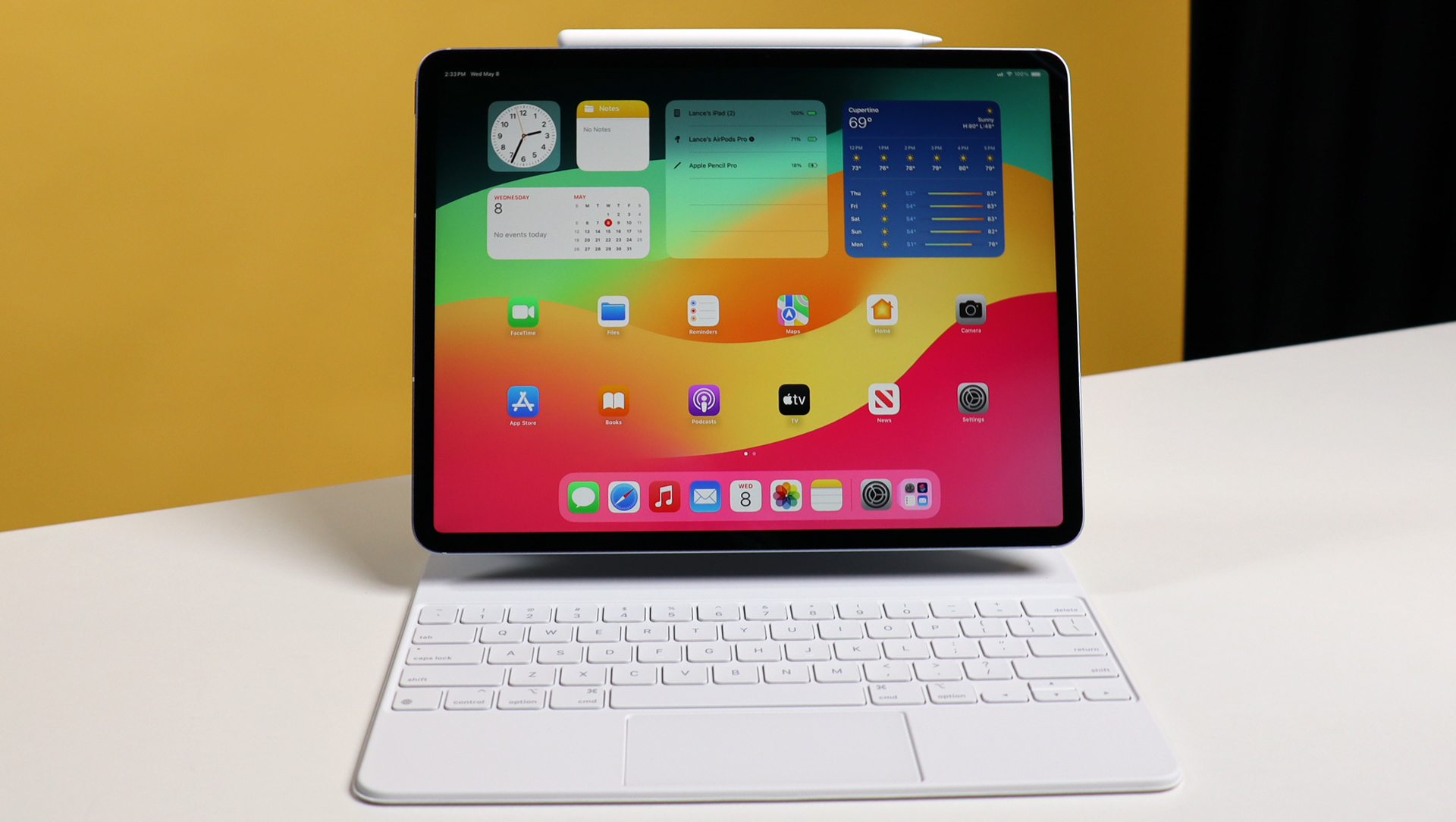
It’s also a worthy update for any current iPad Air owner. You get a significant screen-size bump (almost 20% more real estate), more storage (it now starts at 128GB), more power thanks to the impressive M2 chip, and a far better placement for that sharp and useful ultra-wide FaceTime camera.
You could spend less on a 10.9-inch iPad, but then you’d miss out on that next-generation Apple silicon performance, Apple Pencil Pro support, and the svelte 6.1mm frame.
If all-out power is your thing, you might be considering the even thinner iPad Pro and its powerful new M4 processor; but if you’re reading this review, that will likely be overkill. In my experience, the M2 chip has more than enough power for most iPad users.
During my testing I used the new Air for everything from content consumption and web browsing to pro-level music editing and console-level gaming, and the iPad Air 13-inch and M2 chip had power to spare.
If you’re looking for the perfect balance of price, performance, and screen size, the iPad Air 13-inch is the tablet I’d recommend and easily joins our list of the best tablets.
Apple iPad Air 13-inch (2024): price and availability
- Available May 7 for $599 / £599 / AUS$999 (11-inch) and $799 / £799 / AUS$1,299 (13-inch)
- 8GB RAM standard. Storage options range from 128GB to 1TB
Apple’s 13-inch iPad Air and the smaller 11-inch model are available now, starting at $799 / £799 / AU$1,299 and $599 / £599 / AU$999, respectively. Both iPad Air options start with 128GB of storage but can be configured with up to 1TB, with 256GB and 512GB options. My test unit was configured with cellular support and 512GB of storage.

- Value score: 4.5 / 5
Apple iPad Air 13-inch (2024): specs
Apple iPad Air 13-inch (2024): design
- Bigger but familiar
- Solid construction
- Design is almost iconic
- Air a slight misnomer
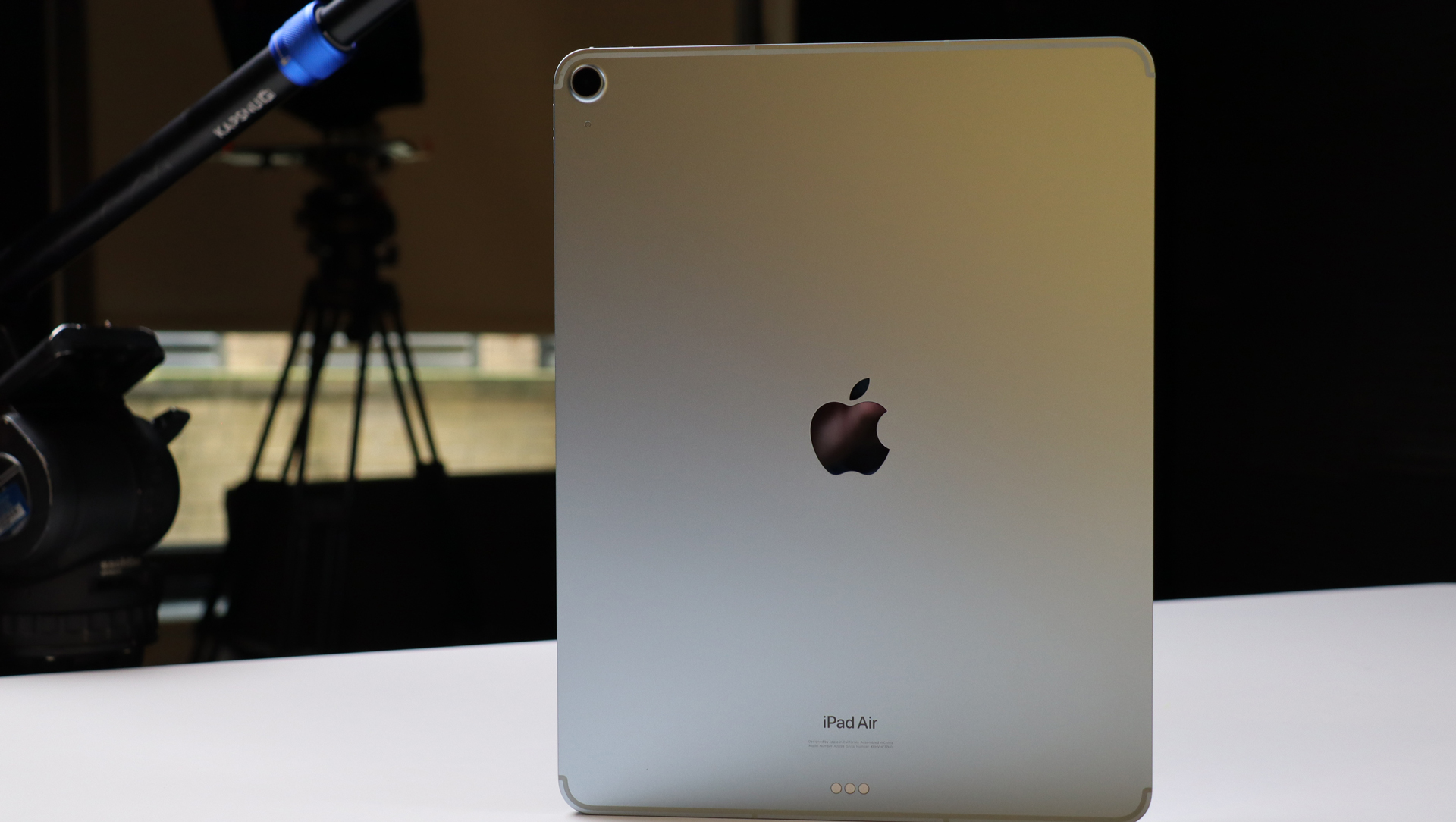
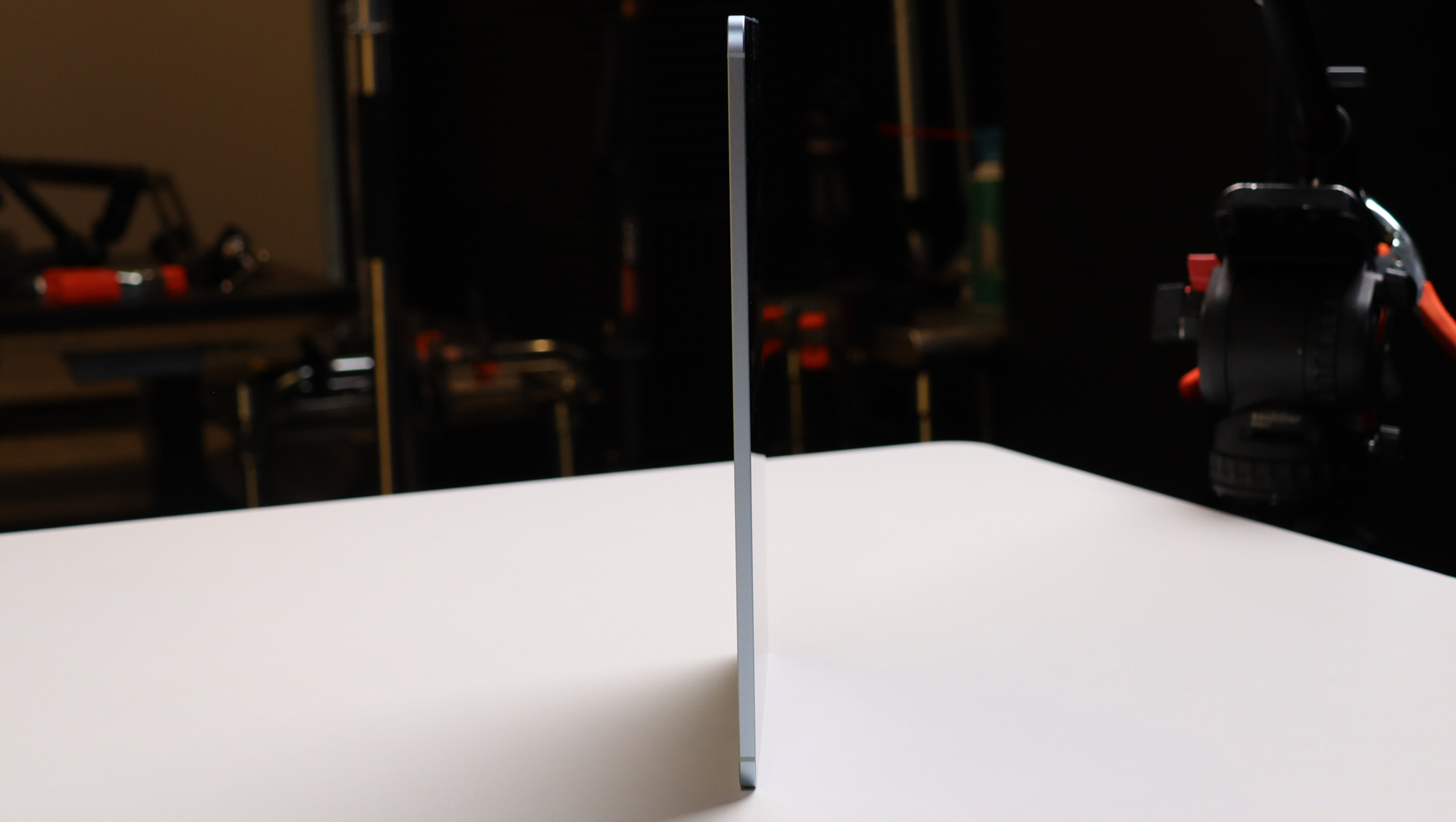

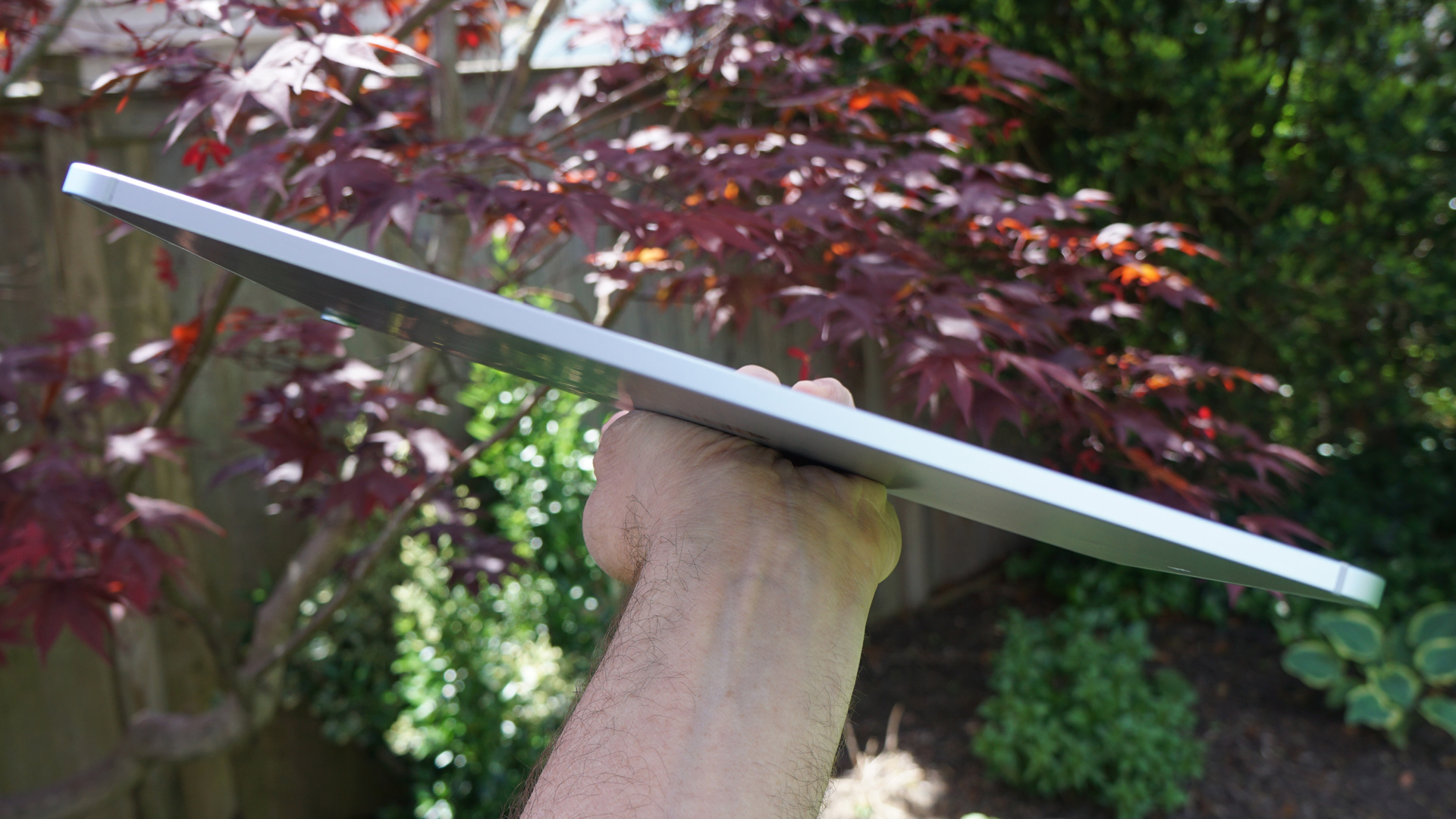



While it’s fair to call the design of the iPad Air 13-inch (2024) familiar, this tablet is also quite different. It’s the lightweight but big-screen iPad Air you dreamed of and, if you can ignore that even thinner 13-inch iPad Pro over there, it’s one of the most exciting new iPad entries in a long time.
While it shares its 6.1mm profile with previous iPad Airs, things diverge from there. This is an 11.04 x 8.46-inch / 28 x 21.5cm recycled aluminum and glass slab that weighs 1.36lbs / 617g. Considering all the extra screen real estate, that’s a pretty remarkable accomplishment (again, pay no mind to the essentially 1lb (579g) iPad Pro 13-inch over there).
Admittedly, little else has changed on this larger slab. The 12MP rear camera is in the same relative spot, as are the volume buttons near the top of one long edge, and the adjacent and responsive Touch ID button. Even the size of the screen bezel looks the same (though it is slightly thinner). But within that black border lies an important update: the FaceTime camera is finally on one of the wider landscape edges, and now sits right below the Apple Pencil magnetic connector (used to pair and charge the Pencil). This small yet significant change required reengineering the charging technology in the new Apple Pencil Pro and inside the new iPad Airs and Pros, which is why the new Pencil Pro is only compatible with the new iPads, and why the new iPads aren’t compatible with all older Pencils. The update also required the shifting of a microphone from the top edge of the iPad to the adjacent bezel (it sits almost an inch away from the camera).
In other words, the iPad Air 13-inch is both fresh and familiar. It’s elegant, thin, lightweight, and big enough to support a wide range of activities. It also makes for a great pairing with Apple’s latest Magic Keyboard, which, while it hasn’t been redesigned to the same extent as the new Magic Keyboard for iPad Pro, is still an excellent, full-sized keyboard for the iPad Air, with a responsive trackpad.
Thanks to the new Air’s much larger screen, the combination feels more than ever like an ultraportable laptop. Just keep in mind that the Magic Keyboard will set you back an eye-popping $349 / £349.00 (almost half of what you pay for a base-model iPad Air 13-inch). The Magic Keyboard for iPad Air 11-inch costs $299 / £299.00. At that point, you might consider buying a MacBook Air 13-inch running the M3 chip (it costs less); just bear in mind that you’ll be gaining some weight and losing both the touchscreen and Apple Pencil compatibility.
- Design score: 4.5 / 5
Apple iPad Air 13-inch (2024): display
- Sharp and colorful
- The 13-inch model gives you more nits
- Roomy and responsive

Like much of the rest of the iPad Air, the tablet’s Liquid Retina display is basically the same as the display on the smaller iPad Air 5th generation, aside from being much larger. Yes, there are a lot more pixels to play with – instead of 1640 x 2360 pixels, you get 2732 x 2048. It’s still the same 264ppi and eye-pleasing Wide color (P3) support, though you do get 600 nits max brightness on this 13-inch iPad Air (the 11-inch model remains at 500 nits). There’s an anti-reflective coating that does a decent job in bright direct light, and the oleophobic film is somewhat effective at repelling fingerprints. As I write this on the iPad Air 13-inch I can’t spot a single smudge, but if I turn off the screen quite a few are evident.
Numbers aside, what matters here is image quality, and across a wide variety of content types, it’s excellent. Everything from photos I took with the iPad to movies, console-level games, apps, websites, and video calls looks great on it. It only suffers a bit in comparison to its new big brother, the M4 iPad Pro, which boasts Apple’s new ‘tandem OLED’ Ultra Retina XDR display. If insanely deep blacks and eye-popping specular highlights are your thing, you may want to consider this more expensive option.
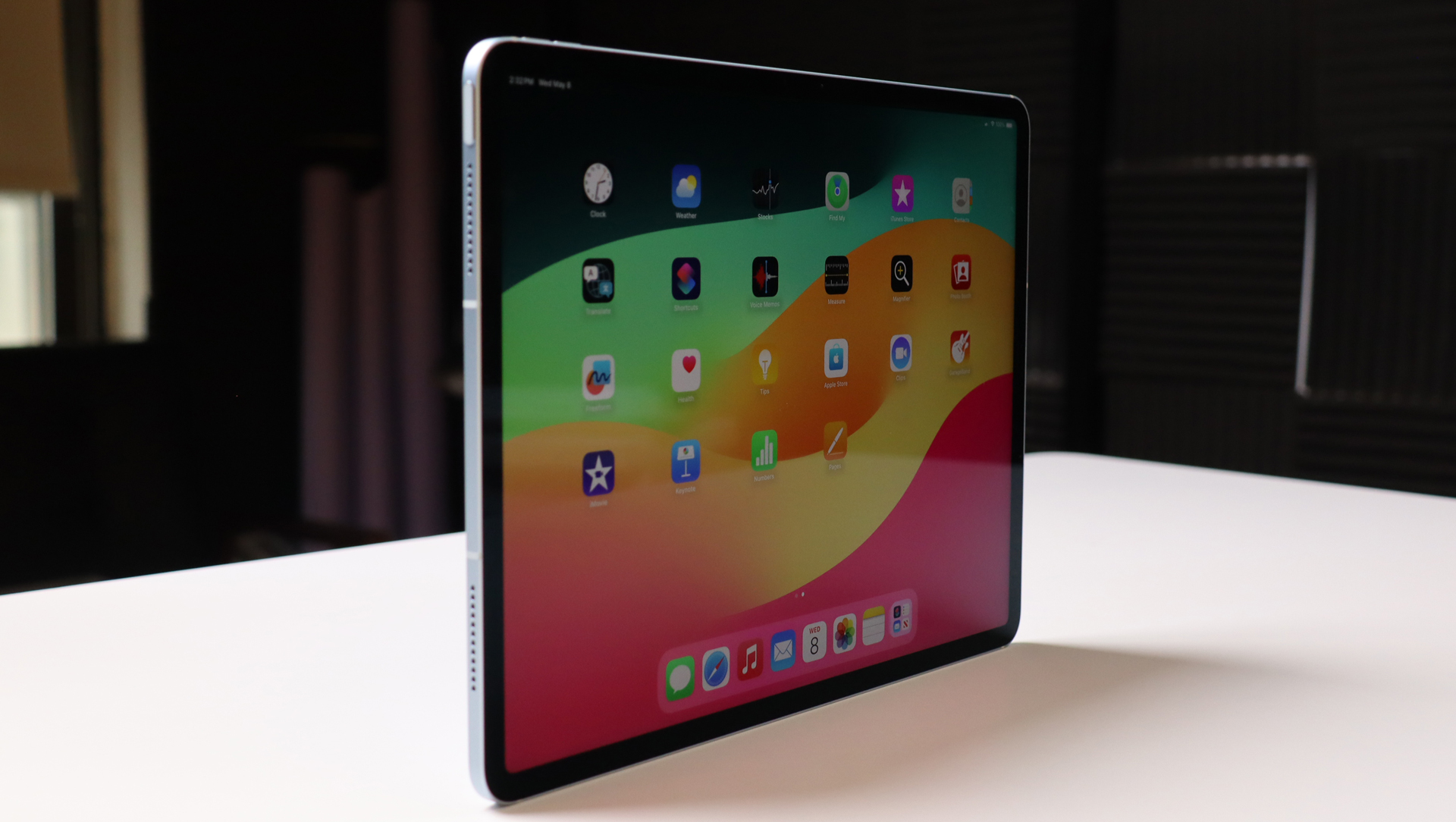
- Display score: 4/5
Apple iPad Air 13-inch (2024): cameras
- The FaceTime camera is now on the landscape side
- No other significant photography changes
The iPad Air 13-inch has two cameras: a 12MP (f/1.8) wide on the back and a 12MP ultrawide (f/2.4) on the front.
That ultra-wide is there not so much to capture group selfies but for use with Apple’s Center Stage technology, which basically pans the camera frame around the full frame to keep you in view. When I use it during FaceTime calls, it means I can get up and walk around in front of the iPad Air, and the FaceTime camera will crop in to keep me close and in the center of the frame. If you take a selfie, the camera will capture a regular ultra-wide snap.
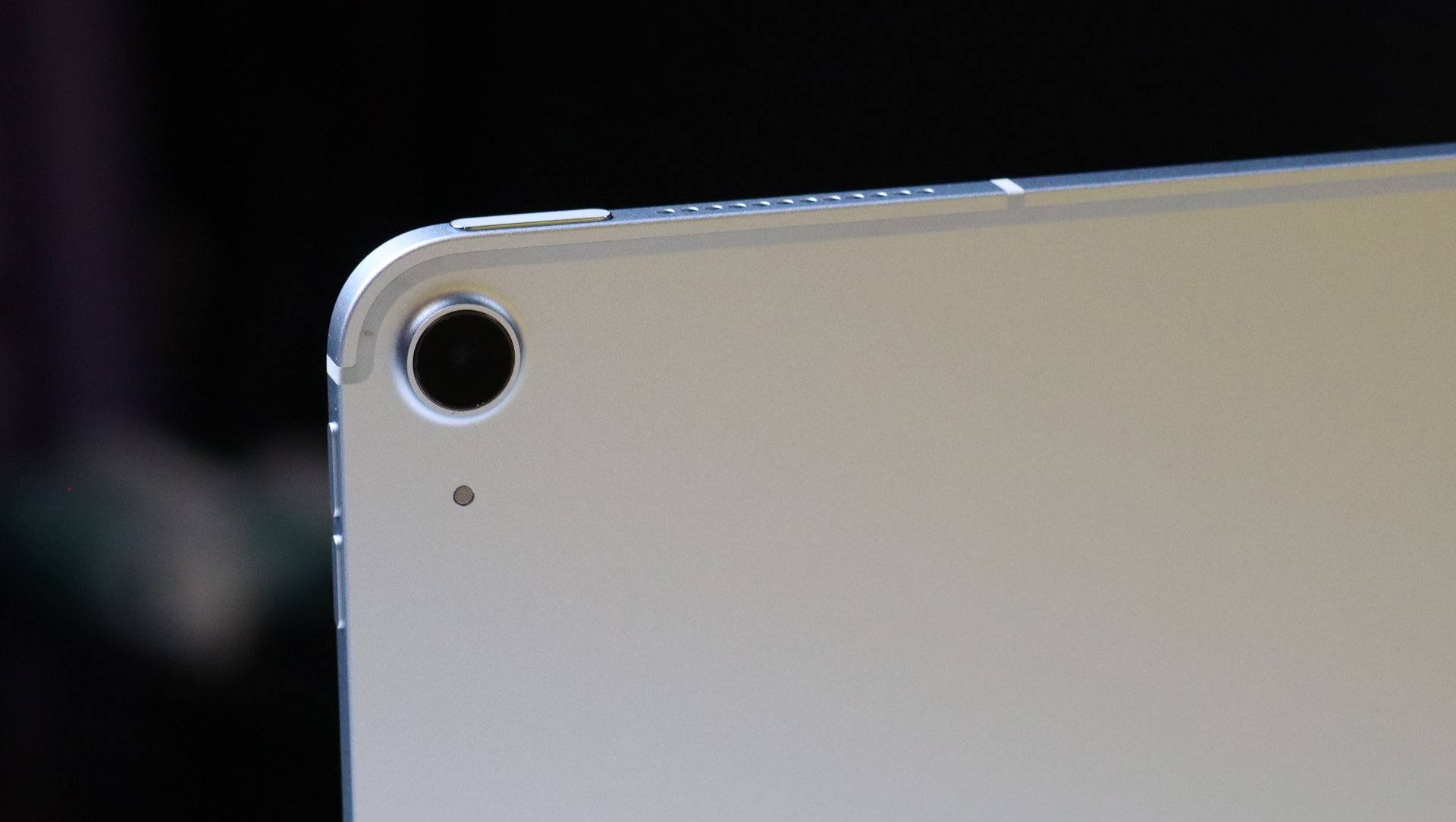
The rear camera still includes a 5x digital zoom (it’s fine but I would never recommend a digital zoom over an optical one if it’s available) and can even shoot 63MP megapixel panoramic if you fancy holding a 13-inch tablet steady as you slowly pan from one street to another.
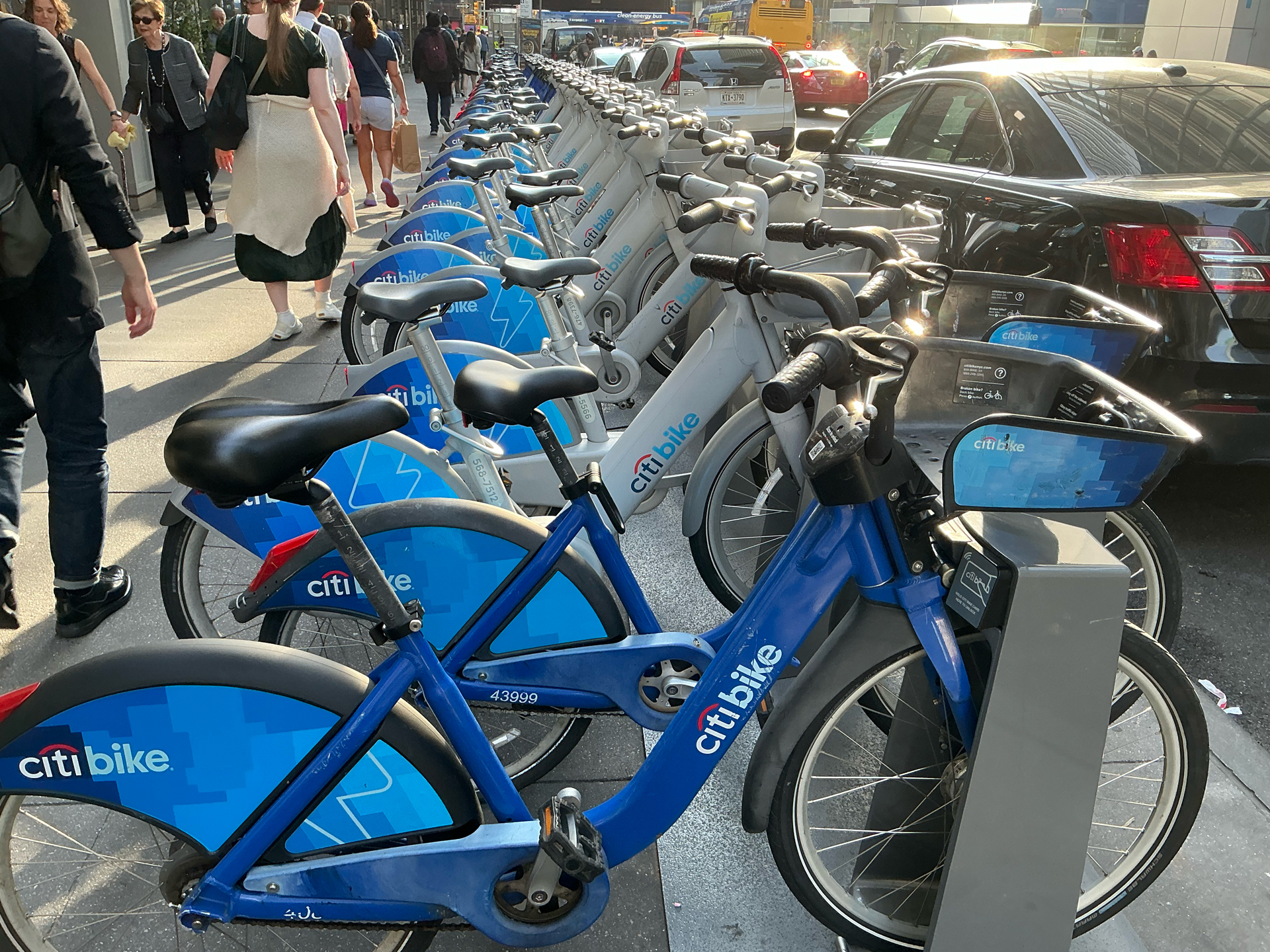






On the video front, the FaceTime camera can shoot up to 1080p 60fps video and timelapse video. The rear camera can shoot 4K at up to 60fps, along with slow-motion video up to 240fps (720p), and timelapse. Both cameras offer cinematic video stabilization, which crops the overall frame to reduce screen shake and give your videos a smoother look.
I understand that some people love shooting photos with their iPads, especially because the screen acts as a huge viewfinder, and I guess they’ll be even more pleased with the even larger display of the iPad Air 13-inch. The photos I took for good. There’s lots of color and detail but I far prefer the image quality I can get with my iPhone 15 Pro Max’s camera array.
- Camera score: 4/5
Apple iPad Air 13-inch (2024): software
- iPadOS is familiar and full of utility
- This much screen real estate cries out for richer multi-tasking
I’m generally a fan of iPadOS, even as it straddles the line between a tablet platform and a more open one designed for a laptop. I appreciate the ease with which I can use Sidecar to connect the iPad 13-inch’s big screen to my MacBook Air and use it as another desktop extension. Universal control mode, where I can seamlessly move my laptop mouse from the Mac screen to the iPad, makes the tablet seem like a cohesive part of the macOS ecosystem.
Being able to have up to three windows open and running different or multiple instances of apps like Safari is useful, but I’m ready to have even more control and start defining the total number of windows I want running on the iPad. Maybe that will come in iPadOS18.



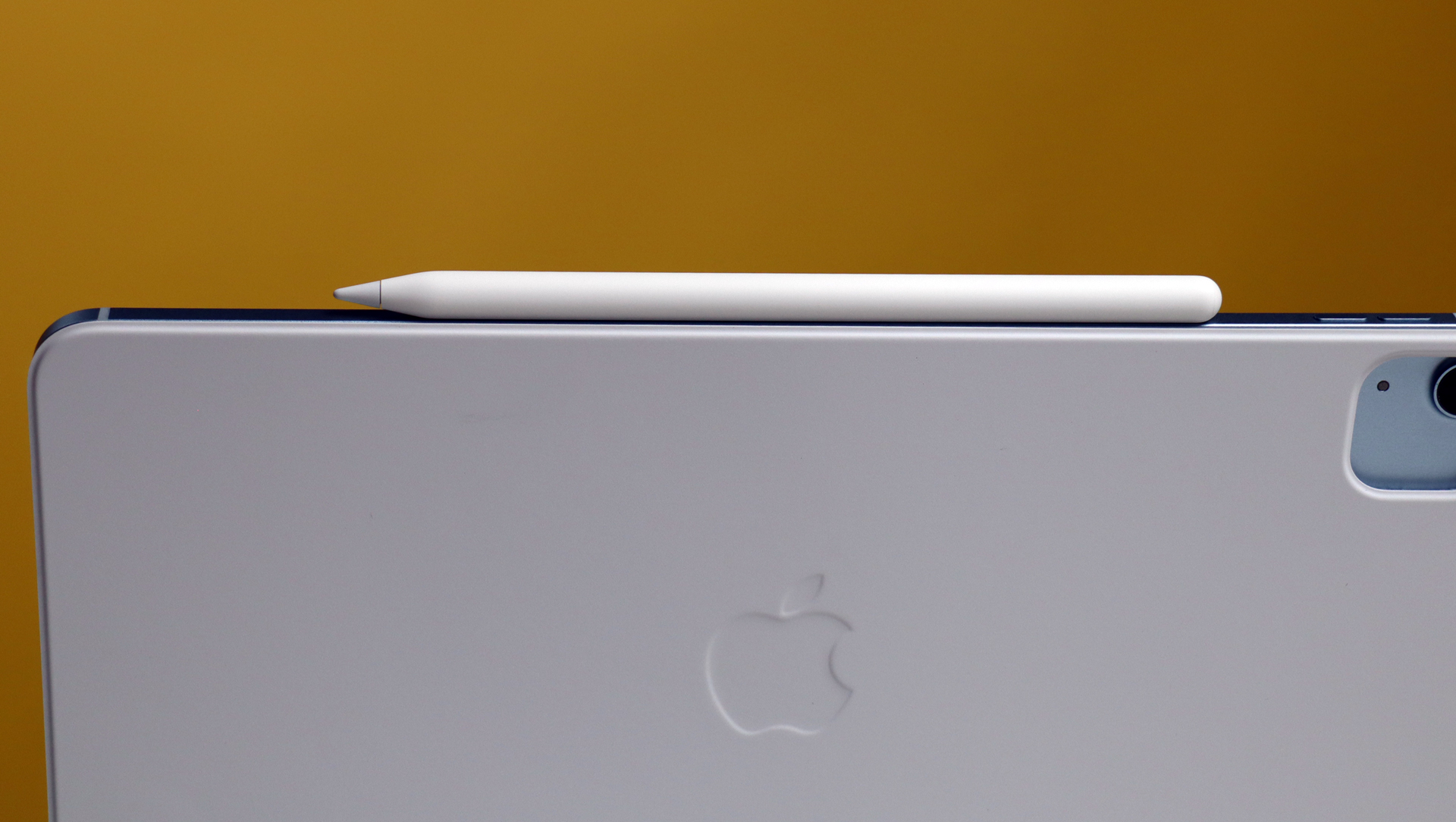

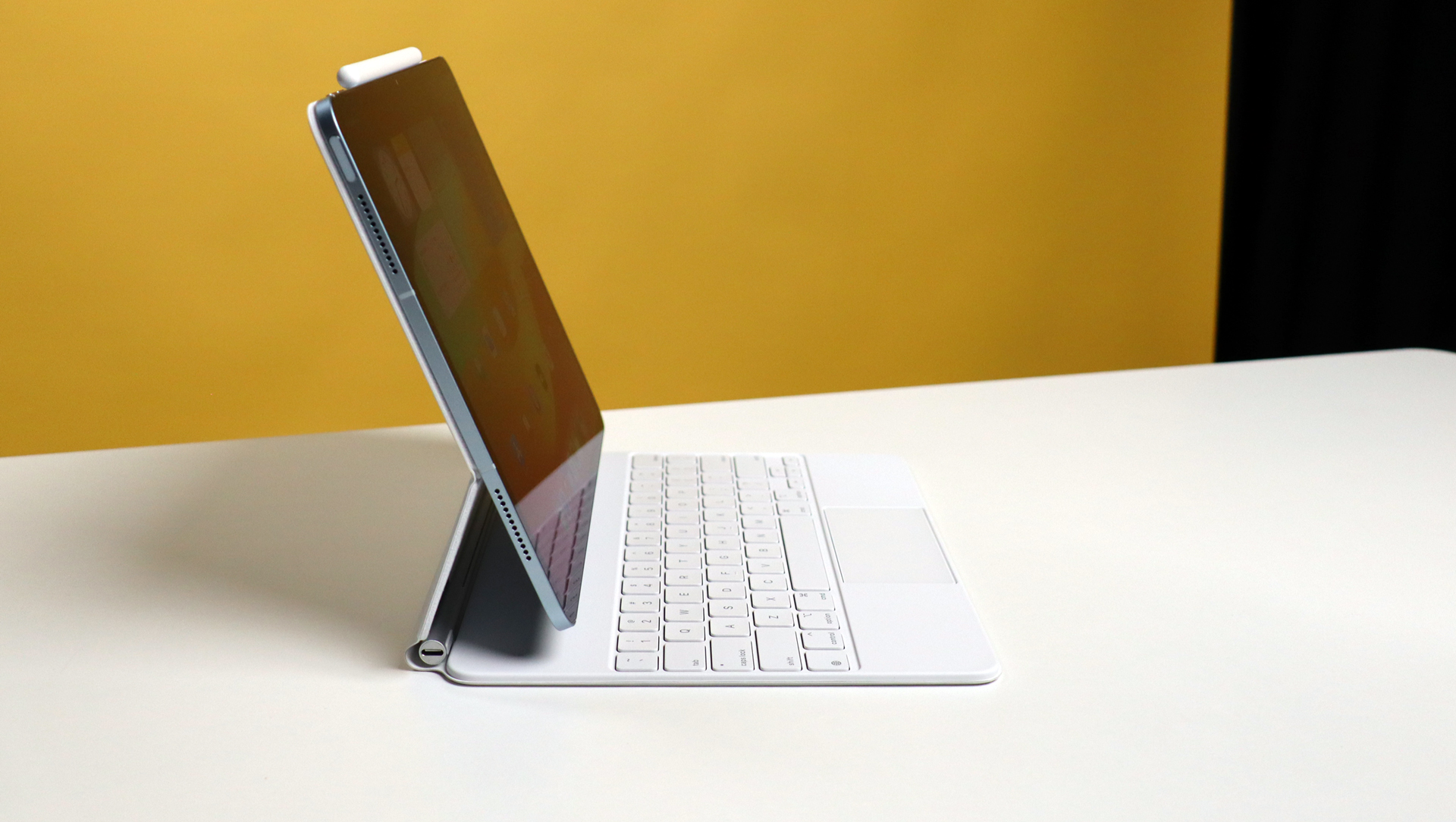
There are so many things I enjoy doing on the iPad, like writing, communicating, video, messaging, playing games, and watching action movies, but nothing compares to drawing on an iPad.
I spent hours drawing this dog in Procreate. Even though Procreate did not at the time support the new Apple Pencil Pro features like barrel roll and squeeze (more about these below) to change settings and tools (that functionality came later during my tests, and only in beta apps), it was still a pleasure. There is zero delay between my touching the Pencil to the screen and digital ink ‘flowing’ out of it.
For the purposes of my review, Apple provided me with a $129 / £129 / AU$219 Apple Pencil Pro. This new digital stylus is a dead ringer for the Apple Pencil 2nd Generation, but there are some big differences. The new Pencil introduces barrel roll, which uses a gyroscope to track when you’re rolling the pencil. On-screen, the digital pen tip turns from a vertical orientation to a horizontal one.
Once I got my hands on a beta version of Procreate, I found the feature a fun and creative addition to my drawing arsenal. Instead of using the studio pen settings in Procreate to vary the pen width, I just twisted the Pencil Pro in my fingers to switch nub orientation and fluidly change width.

Squeeze, which I accessed while using a beta version of the animation app Procreate Dreams, lets you squeeze the lower third of the pencil to access customized art app features, and haptics gives you vibration feedback on the Pencil. In Procreate Dreams, for example, a squeeze opens a rich circular options menu.

I’ve been drawing for a while on the iPad Pro 12.9 inch. I love the big canvas, but at 1.5lbs / 680g the iPad Pro 12.9 is a little unwieldy, and the lighter and thinner iPad Air 13-inch is a welcome change. Drawing on a screen this size takes me back to my old pencil and drawing-pad days. Drawing on a 10.9-inch, or even 11-inch display can feel confining compared to 13 inches of digital space.
While Apple is expending considerable effort in pitching the iPad Pro as the ultimate creative tool, the iPad Air can hold its own in this respect, and I had no trouble editing 4K video in iMovie or managing dozens of tracks in Logic Pro.
- Software score: 4 / 5
Apple iPad Air 13-inch (2024): performance
- M2 is aging but still very powerful
- Double the base storage
- Hard to find something the tablet couldn't do
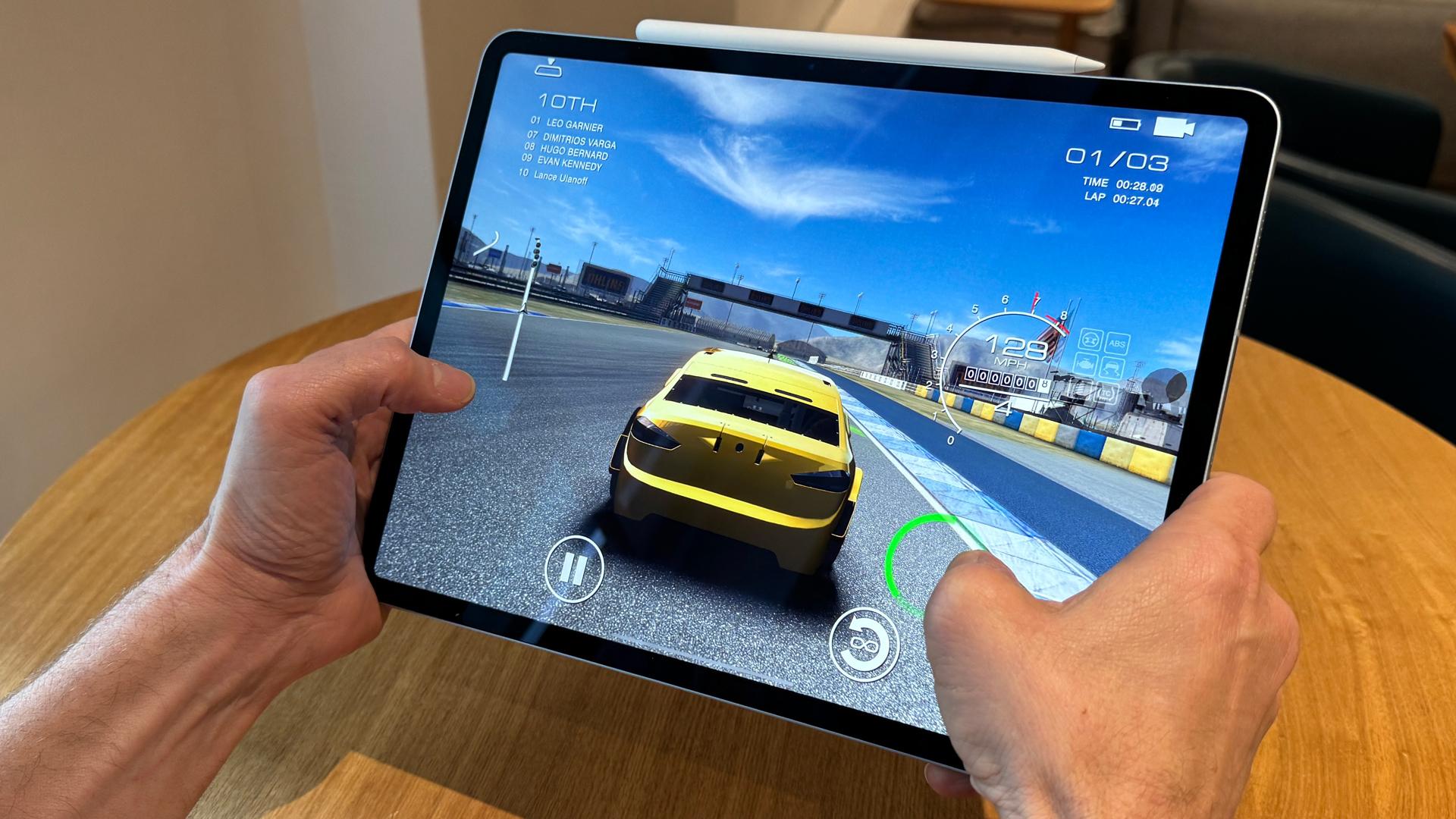

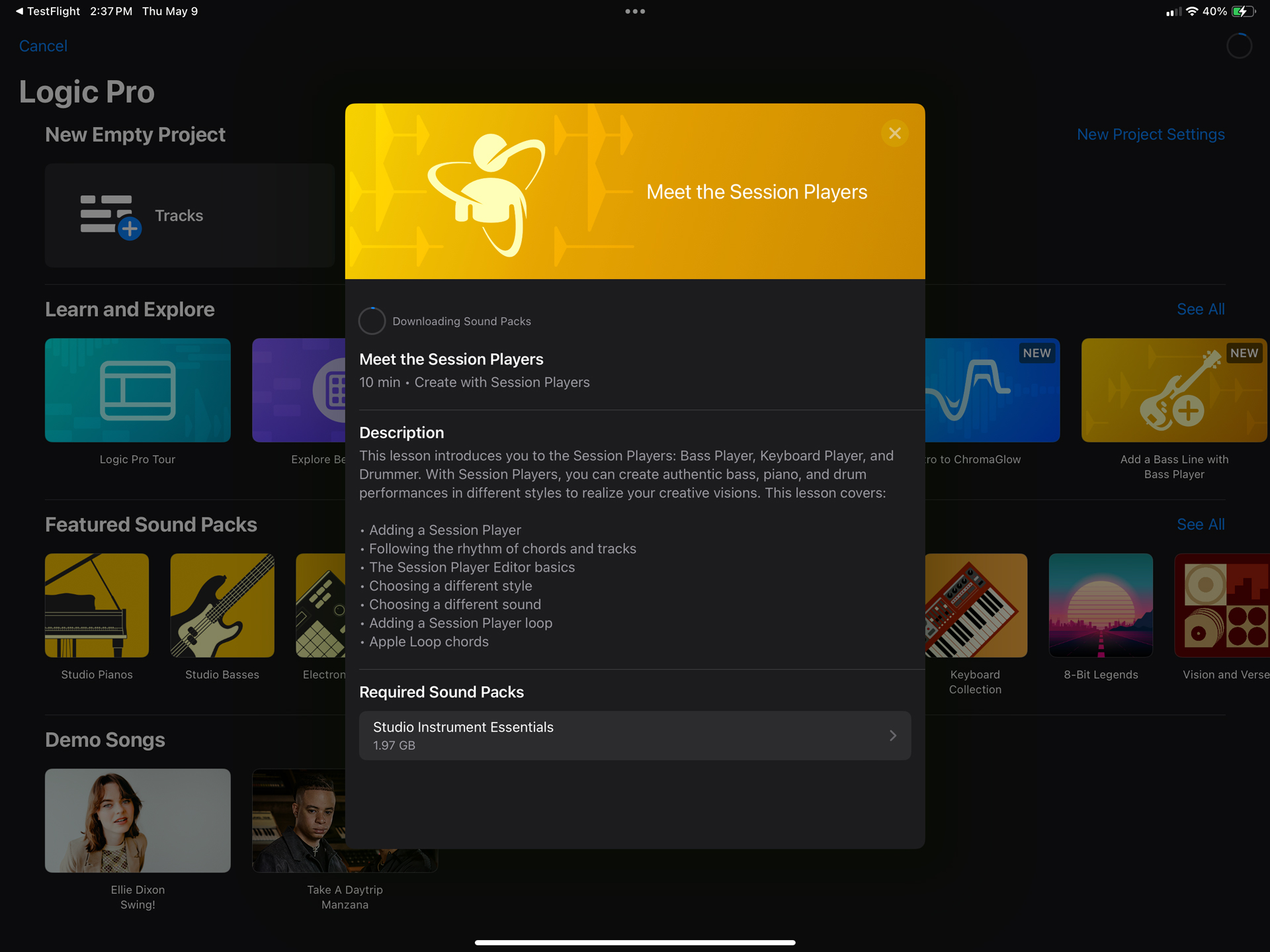


At the heart of the iPad Air 13-inch’s impressive performance is the M2 chip, a piece of Apple silicon I’ve had experience with in the last-gen MacBook Air. Even though this chip is now two generations behind the iPad Pro’s M4, it’s no slouch.
With an 8-core CPU, 10-core GPU, and 16-core Neural Engine (backed by 8GB of RAM and 128GB of storage – up from 64GB), there’s still significant headroom on this aging bit of silicon. Even now, the Geekbench 6.3 numbers are impressive, and align with what I saw on the MacBook Air M2; and while its scores are lower than those of the M3, they remain among the best you can get for this class of product. In other benchmarks that looked at gaming and 3D performance, we saw significant improvement over the iPad Pro 12.9’s M1 performance.

All that performance is only interesting, though, if it powers real-world apps. The tablet is an able gaming platform. I raced around a track in Grid AutoSport Custom Edition, and was pleased to see nothing but smooth motion and zero lag. The iPad Air 13-inch also performed well when I played the incredibly creepy Resident Evil 4. The motion was smooth, and there was only a tiny bit of pixelation in the action sequences. I played that game with and without headphones – the landscape stereo speakers, which are positioned on either side of the tablet, deliver excellent and quite rich audio, but I highly recommend enjoying all videos and gaming content audio through a pair of AirPod Pros 2 to get the full Spatial Audio experience.
- Performance score: 4.5 / 5
Apple iPad Air 13-inch (2024): battery and connectivity
- All-day battery life depending on activity
- Can sip power for basic tasks
- More intense ones can drain it faster
- No Wi-Fi 7

Battery life is rated to last a “full day” according to Apple, or around 10 hours. Our test put it at 11 hours and thirty minutes. In more anecdotal tests, my battery life ranged from 10 hours to as little as eight or six depending on the activity and settings (like screen brightness).
My iPad Air 13-inch test unit came with 5G connectivity. It was reasonably solid on my commute home, but my neighborhood is a 5G desert, so I had to make do with LTE. The iPad Air supports WiFi 6E, but oddly not the emerging WiFi 7 standard. There’s also support for Bluetooth 5.3. As with most US-based iPhones, the iPad Air is eSIM-only, but in all markets.
- Battery and connectvity score: 4 / 5
Should you buy the Apple iPad Air 13-inch (2024)?
Buy it if…
Don’t buy it if…
Also consider
Not convinced by the iPad Air 13-inchPad? Here are a few other options to consider:
How I tested the Apple iPad Air 13-inch
Apple loaned me an iPad Air 13-inch, Apple Pencil Pro, and the Magic Keyboard. Over almost a week, I used the iPad Air to do everything from stream content, to draw in Procreate, manage email, and browse the Web. I also used it to write this review.
I ran some of my own benchmarks but also relied on Future Labs for additional benchmark data and battery rundown tests.
I used the new Apple Pencil Pro for drawing, though its barrel roll and squeeze menu access features were not available during the majority of my testing time.
First reviewed May 2024







